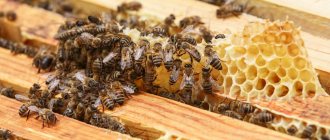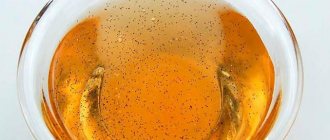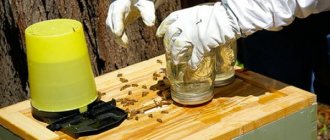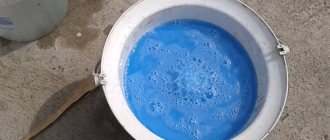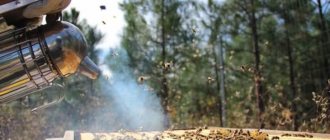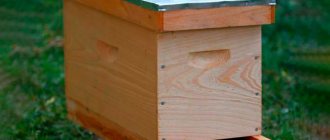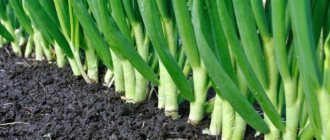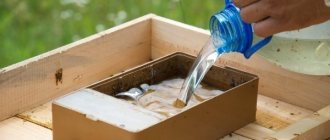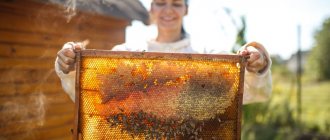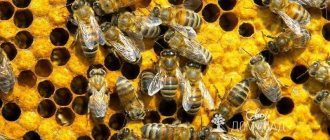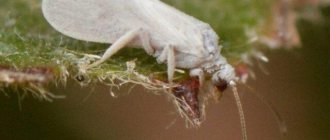Winter
In winter, before the cleansing flight, feeding bees with liquid food is strictly not recommended.!
The bees may think that a bribe has begun, they will fly out of the hive in the cold and die. In such cases, it is better to take a frame from the edge of the nest or even from a hive with a dead family and place it under insulation on top of the frame, having previously warmed it up.
Read: Feeding bee colonies with old honey
Immediately after the flight, you need to make syrup in the proportion of 2 parts sugar to 1 part water (2:1) . This concentration is best suited for winter feeding.
Spring
, a syrup of 50% concentration (1:1) is recommended to stimulate egg laying . This feeding most accurately imitates natural feeding and contributes to the best build-up of family strength for the summer harvest. For example, in those regions where white acacia blooms in mid-May, incentive feeding with sugar syrup should begin in mid-February, i.e. 85-90 days before the start of the first commodity bribe in the region.
Summer
It is recommended to give the syrup of the same composition (1:1) to bees in the summer..
If, due to rain or, conversely, drought, flower nectar does not reach the hives for a long time, the queens will almost stop sowing. Families will approach the main bribe weakened and, at most, will be able to apply honey only to themselves, leaving the beekeeper without profit, and in the worst case, they will need autumn feeding for the winter.
It is best to give syrup in the summer in the evening, 200-300 grams per family, so that the bees process it overnight, and in the morning, if the weather returns to normal, they can freely go for natural nectar.
Autumn
In the fall, if there is a shortage of food for wintering, the beekeeper carries out autumn feeding with sugar. The recommended syrup concentration is (1.5:1) .
It is this kind of food that insects take from feeders faster, wearing out less and consuming less sugar when processing it, placing it in cells and sealing the honeycombs.
Feeding bees with sugar syrup: preparation rules
To obtain additional nutrition, use white refined sugar. You can’t make it with sour cream, fruit juices, spoiled jam, or molasses. Poor food causes bees to have diarrhea in winter, and by spring they die. The water should be clean and soft, without chlorine, and the dishes should be clean.
In addition to regular syrup, they make inverted syrup. Its use as a top dressing provides many benefits. It is better absorbed by bees because its properties are similar to honey. Insects live longer, reproduce, remain functional, and tolerate wintering well.
Tips for making and using invert syrup:
- You should not take dishes made of aluminum: in an acidic environment, this metal releases toxic substances.
- During the cooking process there should be no strong boiling or burning of sugar, otherwise the syrup will contain substances harmful to bees.
- The containers for storing and preparing fertilizer must be clean so that it does not turn sour.
You can check the degree of inversion of the finished solution using indicator strips or a special device.
Feed consumption
The main difference between bees and other farm animals is that they prepare their own food. It looks like this: they process, then can and form special reserves using bee bread and honey. Each beekeeper is obliged to control this process. Bee colonies approach food consumption rationally.
As for the financial side of the issue of fully providing an apiary with feed, the total cost of feed is about fifty percent of the cost of all beekeeping. The basis for maintaining a strong and healthy bee colony is abundant, good-quality food supplies. They ensure high honey yield even under poor conditions
It is important to remember that when there is a supply of food, the queen lays many more eggs, better development of the entire family is observed, and by the main honey flow the enormous strength of individuals increases
Honey products are used as a natural supplement, as it is a natural source of nutrition and a record holder for the amount of nutrients, macro- and microelements, as well as minerals and vitamins contained. These components are vital to restore the full functionality and vital activity of honey plants. The ideal feeding option is meadow and flower honey products taken from sweet clover or white acacia. Many beekeepers use special feeders in which they place food. In addition, there are alternative and no less convenient feeding methods, for example: a jar or honeycomb.
You can prepare a special honey syrup. To do this, you need to mix water and honey in equal proportions. The prepared liquid is poured into feeders. The optimal dosage for one family is a glass.
How to make syrup for bees from sugar
The cooking technology is as follows:
- Take the required amount of granulated sugar, and it should be white. Reed and yellow are not allowed.
- Pour clean water into a prepared deep container.
- Bring the water to a boil over low heat.
- After the water has boiled, begin to introduce granulated sugar in small portions. Stirring constantly.
- The mixture is kept until the crystals dissolve.
- You can prevent burning by not bringing it to a boil.
The finished mixture is cooled to +35°C at room temperature, after which it is given to bee colonies. The water should be soft. Hard water must be left to stand for 24 hours.
How much syrup is needed for 1 bee colony?
As practice shows, the volume of sugar syrup obtained when feeding bees should not exceed 1 kg at the beginning of the winter period for each bee colony. By the end of winter, the consumption of finished products will increase, and each hive will consume up to 1.3-1.5 kg monthly. In the spring, when young offspring are born, the amount of products consumed can double. This is due to the fact that there is still very little pollen and the weather does not allow starting to collect nectar.
How do bees process sugar syrup?
Processing is carried out by young insects that will go into winter. Syrup, like nectar, is not a complete food. As you know, syrup has a neutral reaction, and after processing it becomes sour, and is practically no different from nectar. Bees add a special enzyme, invertase, which breaks down sucrose.
What additives are needed in the syrup for egg production of the uterus?
To increase egg production, the hive queens add pollen substitutes to the combs - protein feed. In addition, you can give:
- milk, in the ratio of 0.5 liters of product per 1.5 kg of sugar syrup. This product is given at 300-400 g per hive, gradually increasing the dosage to 500 g;
- To stimulate the growth of bee colonies, cobalt is used - 24 mg of the drug per 1 liter of ready-made feeding.
In addition, high-quality regular syrup will help increase the number of broods.
Shelf life of syrup for feeding bees
If necessary, if a large amount of subcortex has been prepared, it can be stored for a maximum period of 10 to 12 days. To do this, use glass containers that close tightly. For storage, choose a room with a good ventilation system and low temperature conditions.
Despite this, many beekeepers strongly recommend using exclusively freshly prepared fertilizers. In addition, it is important to consider that most bees will not take syrup if it is not prepared correctly.
Seasonal features and differences in fertilizing (autumn, winter and spring)
Increasing the immunity of insects and preventing their death depends on the timing of autumn feeding. Taking into account the different periods of onset of cold weather, which differ from year to year, it is necessary to calculate the timing of additional feeding so that the insects have time to process the food before the air temperature drops.
Did you know? A full-fledged bee colony consumes on average about 20 kg of protein and about 100 kg of carbohydrate feed per year.
At air temperatures below +10°C, bees produce less invertase. Bees synthesize the enzyme invertase, which is used to make honey from nectar. This enzyme is a catalyst for the breakdown of sucrose. The result is fructose and glucose. Thus, autumn fertilizing should be carried out in September.
A good wintering of little workers is provided with complete food and, if necessary, additional nutrition. Insects are stimulated by feeding before the start of the season in March-April.
What concentrations of syrup are used in beekeeping
Preparing the solution is not difficult. The standard recipe includes a kilogram of sugar per one and a half liters of water. If the solution is liquid, then it is better to use a similar concentration in the spring, because such a syrup will provoke the bees to fly out of the hive. If the solution is thick, then on the contrary, it will provoke the bees to return to the hive, so it is used in the fall. Below is a list of sugar syrup concentration proportions that you should use as a guide:
- thick - 2 parts sugar to 1 part water (70%);
- average density is 1 to 1 (50%);
- liquid solution is 1 to 2 (30%).
What to feed bees in the fall
In Russia, each beekeeper has his own recipes for all occasions (like fishermen’s bait recipes). This is all because our beekeepers really care and worry about their charges. Mites appeared - we added thyme (thyme) to the sugar syrup, found signs of nosematosis - added a little hot pepper. If everything is fine in the apiary, then just for the sake of prevention, you can add a couple of drops of pine decoction to the fertilizing to improve immunity. In Europe, a more commercial approach to beekeeping is thriving. Everyone feeds the bees wet sugar or sweet dough (kandi).
Sugar and water - that's all. No recipes, proportions or anything else. Simple and effective. But without a soul.
In America they prefer corn syrup. At the same time, their bees winter well and give good bribes. True, their winters are not like ours. From this short introduction, you already understand what to put in the feeders:
- sugar syrup in different proportions;
- wet sugar;
- sugar with honey;
- Kandy sweet dough.
Which of all is better - everyone will decide for themselves. If the wintering was successful, then everything was done correctly. We believe that it is best to leave more honey for the bees by autumn and let them spend the winter on their reserves. But in winter, the hives still need to be checked and food added as needed.
Proportions
To stimulate the uterus, the proportion of syrup should be 1 kg of sugar per 1.5 liters of water. Liquid feeding of bees must be done after the first flight. If there is no bribe in the summer, give families a solution in a ratio of 1 to 1.
In August, feed insects with 60% syrup: 1.5 kg of sugar + liter of water. The concentration of syrup for feeding bees in winter is 2 to 1. For 1 kg of sugar, add 0.3 ml of acetic acid.
Recipes
You will need:
- 12 liters of water, 14 kg of sugar, 28 grams of citric acid - for spring feeding;
- 5 liters of water, 8 kg of sugar, 15 grams of acid - for preparing winter food.
Stages of making fudge:
- Boil the water. It shouldn't be tough.
- Pour it into a container with sugar. Use natural sugar without additives for this purpose.
- Stir the mixture until the sugar is completely dissolved.
- Cool the solution. As soon as the temperature drops to 45 degrees, you can add additives.
- Pack the food into plastic bags and place it on top of the hive.
How to determine the quality of honey? Add the sweet thick mass to the quicklime. If flakes form in the sweet thick mass, then it is not suitable for feeding bees with honey.
Dosage
In early spring (late February or early March), even before the start of the first flight, and in the fall, thick solutions are used to replenish reserves for the winter. In the summer, bees are fed liquid syrups.
The volume of syrup offered to bees is measured not in kilograms, but in liters, just like the volume of feeders.
From 1 liter of water and 1 kg of sugar you get 1.6 liters of finished syrup. From 2 liters of water and 3 kg of granulated sugar you will get 3.8 liters of feed. Given these numbers, it is easy to calculate how many ingredients are required to prepare feeding for the entire apiary.
Liquid feed
To prepare liquid food (50%) you will need:
- 1 l - sugar (0.6 kg), water (0.6 l);
- 5 l - sugar (3.1 kg), water (3.1 l);
- 10 l - sugar (6.2 kg), water (6.2 l).
This type of feeding of bees with sugar syrup is used after the spring flight. It is important to maintain proportions so that the food is of high quality and tasty for insects.
Preparation of sugar syrup
Thick food
Preparation of winter feeding of 60% concentration is carried out in the following proportion:
- 1 liter of syrup requires sugar (0.8 kg), water (0.6 l);
- for 5 l - sugar (4 kg), water (2.7 l);
- for 10 l - sugar (8 kg), water (5.4 l).
This complementary food is given to bees in the spring, before the first flight, and in the fall for the winter.
Advantages and disadvantages
Sugar syrup is superior to other fertilizers in being cheap and easy to prepare. The benefit of feeding bees with sugar will be when there is a need to do so. Winged workers feed themselves and you need to feed them with sucrose when there are reasons for this:
- Prevention of foulbrood diseases;
- Increase feed for the winter. Including replacing honey with honeydew or bacteria;
- Sugar jam is useful if you need to raise offspring, but there is little nectar in flowering plants;
- The syrup is given to insects in the spring, when there is no nectar and pollen yet.
- Stimulating feeding of bees. To increase egg laying and brood rearing.
This type of feeding has two disadvantages.
- When insects process sucrose in their bodies, many enzymes are used. These are substances that accelerate chemical reactions in cells. To synthesize them, you need a lot of protein. But it is not enough for brood. The offspring grows 30% less.
- Flying workers have a reduced life expectancy.
About inverting
Some beekeepers prepare invert syrup to feed bees. It is more easily processed by insects.
It is important to meet three conditions here:
- the amount of invert (most often citric acid);
- temperature regime;
- inversion time.
It is recommended to take 1.4 gamma citric acid per liter of liquid syrup or 2 grams of invert per kilogram of sugar. The temperature of the liquid when adding acid should be between 80-90 degrees Celsius. The inversion process lasts 70-90 minutes.
Recommendations
- Make jam from high-quality sugar. For bait you should use reed or beet bait.
- Calculate the amount of additional ingredients if you add them to the solution. If you put more than necessary, then at best the insects will not eat, at worst they will fly away from the apiary.
- Feed the bees fudge strictly on time. Give it earlier - the young animals will not grow by the time of feeding and will go to winter in a weak condition. Feed later - the insects will not have time to process sugar into honey before wintering.
- Try not to disturb the bees again in winter.
- In the cold season, when families are wintering, the temperature of the syrup should be 25-30 degrees.
- In winter, make sugar syrup with the addition of 5 mg of magnesium sulfate and 55 mg of potassium phosphate. Insects live longer and produce a quarter more honey.
- Add cobalt chloride to the feed to increase brood production.
- A family needs a liter of solution for one day.
- Give weaker families less feeding.
Why don't bees take syrup?
Syrup prepared with love, feeders and honeycombs carefully filled. But the beekeeper notices that the bees refuse the treat and do not take feeding. There may be several explanations for this phenomenon:
- syrup temperature below 10 degrees;
- the syrup contains nutrients that are unpleasant for the bees;
- the feeding has deteriorated.
These are important points, since low-quality syrup or its absence can lead to the death of the family.
Useful tips
Experienced beekeepers give beginners useful recommendations to save and increase their bee colonies.
- Bees should be fed only with fresh, high-quality syrup made from natural beet sugar. Cane sugar is not prohibited, but you need to choose it only from a reliable manufacturer. If you make a mistake when choosing sugar, it can lead to the death of families.
- If you overdo it with additives (fir oil, herbal decoctions), the bees may refuse the syrup or leave the hive.
- Late feeding threatens early closure of the cells.
- Syrup offered to bees early will only be taken by old bees that took part in last year's honey harvest. The young animals will remain hungry, which will lead to their death.
Sugar syrup is an excellent alternative to honey, which helps preserve the natural product. But if such feeding is carried out constantly, then this threatens to produce low-quality sugar honey, loss of immunity and viability of the family. Ultimately, such actions lead to the fact that the colony may leave the hive or simply die.
Experience shows that winter feeding has a bad effect on bees. They become restless and activity increases. However, in cases where supplies are short, this can save the family from death. Following the recommendations of experienced beekeepers will help reduce the risk of losing a colony and maintain the functionality of the swarm.
- You need to start preparing your beekeeping for winter in August.
- The volume of stored honey depends on the size of the family.
- Winter feeding is carried out as necessary. It is advisable to use honey.
- Sugar syrup is used as a top dressing in August to quickly fill empty frames.
- In the first month of autumn, all nests should be prepared for wintering.
- If there are not enough reserves, sugar syrup is prepared in higher concentrations. The purpose of autumn feeding is to obtain food for the winter.
- Towards the beginning of March, the bees are fed with a mixture of beebread and honey, and cakes made from powdered honey dough. Half-empty frames are filled with sugar syrup and placed in the hive.
Try to disturb bee nests as little as possible. The state of a family can be determined by noise. If the hum inside is smooth and calm, then everything is in order. There is no need to open the house in vain. When there are problems and insects are restless, the noise is intermittent. The bees are fed when the weather is not too cold. And those families that winter in omshanik can be fed as needed in any weather.
Syrup for the winter
Winter feeding of bees with sugar syrup is used relatively rarely. Basically, either late autumn or early spring feeding is carried out.
In the cold season, bees are fed with thick syrup; the ratio of liquid to sugar in it should be 3:2. The yield of the finished product during preparation will be 3.8 liters. For 1 bee colony living in a separate hive, 1 liter of syrup will be enough. They give it in bags, placing it on the lid of the box and covering it with insulation on top.
Feeding bees
There are several ways to prepare thick food for bees from sugar and honey:
- For 1 liter of water take 2 kg of sugar and 600 g of honey. Add sugar to boiling water, boil, and skim off the foam. Then reduce the heat and add honey. Bring the mixture to a boil again, remembering to stir constantly. When the syrup has cooled, it is rolled into balls and placed in the hives.
- Add 1 liter of water to 5 kg of sugar, boil the syrup over low heat for half an hour. Citric acid in the amount of 2 g must be added to it. When the syrup hardens, the resulting “candy” can be placed in the hives.
- Regular refined sugar is laid out on pieces of gauze, the resulting bags are moistened with water and placed on frames under the canvas. After a couple of days, you need to check if the sugar has dried out. If necessary, it is carefully moistened with water, trying not to disturb the bees.
- Crystallized honey. It is desirable that it have a fine-grained, greasy consistency. They make cakes from honey and wrap them in several layers of gauze. Place like sugar under the canvas.
In cases where the cold lasts too long and there is a lack of nutritional reserves, you can add more food. It is advisable to enrich its composition with herbal decoctions, flower honey, sea salt, which have a positive effect on the life of bees.
Feeding rules
Feeding bees with sugar syrup for the winter is carried out in several ways:
- The most ideal option is to pour the solution into special feeders located above the bee colony’s nest.
- Liquid feeding in winter or spring is poured into a liter jar. The neck is wrapped in several layers of gauze. The container is turned upside down and fixed on the upper bars of the frame.
- Some beekeepers pour the syrup into plastic bags. They are filled with food, the air is released, tied tightly and placed on the upper bars of the frames. The bags are perforated in several places with a needle to provide the bees with access to food.
Feeding the bees
Spring feeding with syrup
In the spring, bees prepare to actively collect honey and procure other bee products. During this period, after the first flight, feeding should be carried out. It will help the bees gain strength and replenish their depleted reserves. In the spring, you can carry out prevention against diseases by adding drugs to the feed.
A large amount of food provokes the queen to lay more generously, which in the future will provide a sufficient number of working individuals. The proportion of sugar syrup for spring feeding of bees is 1:1 or 2:3 (40% or 50% concentration). This food is well digestible and stimulates egg laying in the queen of the hive.
It is worth remembering that in cold weather bees are not given too liquid food, so as not to provoke them to fly out of the hives.
Feeding bees
Why feed in the spring?
Spring is an active period for bees, when it is necessary to build up strength for the upcoming honey harvest, which is usually held in July.
Spring feeding of insects is carried out for the following purposes:
- replenish food supplies;
- stimulate egg laying by the uterus;
- cure some diseases and prevent them using special supplements;
- improve the quality of honey, its aroma and taste;
- increase the overall productivity of the apiary.
Early spring is characterized by unstable weather, a lack of food in nature, a small amount of food in the nests and weakening of the bees.
If insects begin to fly out en masse for nectar, most of them will die. To prevent this, feed supplies are replenished.
Analogs
Kandi is a dough made from sugar and honey. The second ingredient must be free from microorganisms. Therefore, honey needs to be boiled. Take two pans: one large, one smaller. Pour water into the first one and boil it. Then add honey to a small saucepan and place in a large container with heated water. The sweet thick mass should heat up to 55 degrees. If the temperature of the honey is higher, substances harmful to the winged workers will be formed.
Cool the mixture and mix it with powdered sugar with your hands. For 1 kg of honey, use 3 kg of sand, 100 ml of water and 1 ml of vinegar. Pour water and acetic acid into the dough while kneading.
Feed Kandy bees only in winter and spring!
Feeding beebread
Bee bread is plant pollen. Insects collect it in honeycombs. In the spring, give the furry workers milk with pollen. Insects need protein to raise their young.\
To prepare this food, you will need:
- 200 g honey;
- 1 kg bee bread;
- 0.2 l of water;
- 0.1 l milk
Add all ingredients and knead until a dough forms. Place food in the hive in 200 g pellets.
Yeast feeding
It replenishes protein reserves. Insects will collect more honey, and the brood will increase by 1.5 times.
- To do this, pour a liter of water into a pan and add 0.5 kg of granulated sugar. Stir until the granules are completely dissolved.
- Boil the solution. While the water and sugar are heating up, mix 50 g of baker's yeast with 3 teaspoons of sugar and grind the mixture.
- Pour it into the hot solution, stir and put it on the fire again.
- Cool the solution to 35-40 degrees and add half a glass of honey per liter of syrup.
In April and May, feed the bees with this supplement either 100 g every day or 200 g every other day. Give the food immediately after preparation. It will go bad if it sits for 2-3 days. Make a separate feeder for each family. Then diseases will not be transmitted between families.
Sugar candies
Pour a liter of water into a container and pour 5 kg of sand into it. Place on the heat and stir until the mixture spreads. During the preparation process, you need to dilute 2 g of citric acid in syrup.
Melissa syrup
You will need:
- 150 g mint;
- 150 g lemon balm;
- 0.5 l of water;
- 1 kg sugar;
- A teaspoon of citric acid.
Wash the mint and lemon balm. The water should completely drain from the plants. Place the ingredients in water and boil for 10 minutes. Leave the water with herbs for a day, then put it back on the fire and add granulated sugar and citric acid.
During cooking, stir and skim off the foam. The solution should stand on the fire for 30 minutes. Pour the jam into the jars and screw on the lids. Wrap the containers with a blanket or towel. The jars must be on their lids.
Proper planting and care of saponaria in a summer cottage
The root system contains a substance that forms foam upon contact with water. Has a cleansing effect. Therefore, our ancestors actively used saponaria for bathing and washing. Currently, the ingredients of this plant are used in cosmetics, medicines and some products. In addition, flowers fit perfectly into the landscape of the estate. Let's take a closer look at these unique flowers, and also learn how to grow soapwort in your garden.
Saponaria in all its glory
The underground part of the culture has a powerful rhizome with many branches. Thanks to its structure, saponaria creates lush “blankets” that decorate flower beds or lawns. Forms erect, creeping shoots. Their height sometimes reaches 80 cm. The stems can be bare or with many small bunches. All of them are decorated with leaves located on the opposite side.
Depending on the type, the leaves can be:
- congratulate linear-lanceolate; oval; broadly lanceolate.
In addition, the sepals have sharp or rounded edges. During flowering, the greenery thins into disc-shaped or paniculate inflorescences. The buds consist of five delicate petals in white, pink or purple. After successful pollination, the fruit appears. They are capsule-shaped with many black, oval-shaped seeds.
The beautiful medicinal soapwort (saponaria) belongs to the carnation family. In nature, it is found almost everywhere in Eurasia. Biologists have classified more than 40 varieties. However, only 10 of them are used in landscape design.
Medicinal
The perennial grows up to 80 cm. The buds are collected in disc-shaped inflorescences. Cultivated species include:
- Alba Plena; Betty Arnold; Rose of Plena.
Each of them has its own unique color. Moreover, some of them have the structure of a macerated bud.
Basilicofolia
Found in nature on the slopes of the majestic Alps. During flowering, it creates soft “carpets” up to 20 cm high.
Popular varieties:
- Camilla; Snow type; Splendes.
The buds are mostly pink in different shades. These varieties are very resistant to winter frosts. It reproduces by self-sowing, creating lush “thickets”.
Olivana
A recently discovered hybrid was obtained by combining dwarf and turf saponaria. Grows up to 5 cm. Creates dense and soft flower cushions.
Lamperjee
Its cultural form first appeared in southern Europe. The flower grows up to 40 cm. It has narrow, lanceolate, dark green leaves. Beautiful buds form at the tops of the stems.
Each of these types will decorate the garden landscape. The flower rug looks great on rocky alpine slides, in hanging boxes and along edges. The medical soap dish creates an original background for roses, peonies, lilies and decorative daisies.
Planting and caring for saponaria in an open flower bed
In the wild, the flower grows on rocky ground. Therefore, when planting medicinal saltwort, the type of soil is taken into account. The best option is limestone soil. It should contain a lot of drainage components, calcium and nitrogen, since the root system of the plant does not tolerate stagnant moisture.
Muddy soil should be mulched with fine crushed stone or gravel.
The place for planting saponaria and caring for it must meet three criteria:
- lots of sunshine; air space; ideal place for plants.
If you shade it, the color of the buds will lose its saturation. The petals will be pale, which will affect the decorativeness of the crop. Shading causes temperature fluctuations, which cause fungal infections. And tall “neighbors” can completely drown it out.
Having chosen a place for a flower bed, begin growing seponaria from seeds in open ground.
First, prepare the substrate by following these simple steps:
- weed rake; loosen the top layer of soil with a shovel or trowel; make shallow holes.
If a dense carpet is planned, the seeds are sown in random order. In addition, there is another way to grow soapwort in a personal plot. Let's look at how this is done with seedlings in mid-March.
Sowing is carried out in winter (October) or spring, when the soil has warmed up sufficiently.
Growing seedlings at home
In this case, you will need small pots or a large container. The containers are filled with a suitable substrate on top of the drainage layer. Wet the soil with a sprayer and then plant the seeds. Cover them with a thin layer of river sand and water gently again. Cover the container with glass or transparent foil. The seeds are placed in a warm room where the temperature is maintained at + 20 ° C. There should also be a lot of diffused light.
When the first shoots appear, the foil or glass should be removed immediately. Plants are regularly watered with water at room temperature and the top layer of soil is loosened. After the leaf blades develop, the seedlings are transplanted into separate pots.
14 days before planting in the ground, the seedlings are periodically taken outside to acclimate them to the outside temperature.
Planting in a flowerbed
Hardened seedlings are transferred to the flowerbed after the threat of spring frost has passed. In addition, the soil should be thoroughly warmed. In most regions of the country this period falls in mid-May.
The prepared area should be plowed and the ground leveled. Make holes in which the seedlings are placed at a distance of 30 cm from each other. Then the bed is watered with a sprayer.
When digging up the soil in the garden bed, it is advisable to arrange a drainage layer of sand and expanded clay.
With the addition of medicinal components
Some beekeepers add herbal decoctions and various medications to the food that increase the immunity of bees, their reproductive function and performance.
Beekeepers often use fir oil. This substance has many useful properties:
- increases immunity against many diseases;
- stimulates oviposition of queens;
- promotes the full development of the brood;
- increases the performance of working individuals;
- has disinfectant properties.
This product is added to insect food in the proportion of 2-3 drops per 1 liter of syrup. The effect on the body manifests itself when essential oils enter the respiratory system of insects.
Errors
- The food is colder than 10 degrees;
- Adding foods that they do not eat to the feeding;
- Feeding with spoiled solution. Do not store it in the room for more than 3 weeks, and in the refrigerator for more than half a year.
- Boiling feed to a temperature above 60 degrees. Bees die in large numbers from burnt sugar.
- The bees are given too much syrup. Then they eat it more slowly.
Honey is full
Another recipe: honey full. To prepare it, boil water, cool it to 50 ᵒC and add one kilogram of honey to one liter of water. If necessary, stimulants and medicinal substances are added.
Prepared fertilizers must be fresh. To ensure that the preparation of autumn feeding of bees is not unnecessary, the calculation is made on the family.
We have already written about how to correctly calculate the required amount in an article about winter feeding.
Some beekeepers do not calculate the dose too much, and the remaining syrup is stored in the refrigerator.
